This episode is a follow-up to an episode I did a few weeks ago. Part one focused on where to find free digital books online. In Episode 97, I shared how I love using digital books in speech therapy because they are so flexible. So in today’s episode, we’ll talk a little more about how to maximize that flexibility and how to use digital books to address many different intervention areas.
Digital books are books!
It is important keep in mind is that digital books are still books! Almost any activity you already enjoy doing with physical books can be adapted to work with digital books.
Working with themes
Working in themes is fun and engaging, and it’s also supported by research. Digital books are great for introducing thematic activities that have depth and meaning, and including opportunities for student-led discoveries.
Vocabulary
We can also use books, either in thematic units or as stand-alone activities, to support vocabulary skills. This is an area where digital books can be even more effective than physical books, because some digital books have built-in dictionaries! Digital books are also great for working with parts of speech or other semantic categories.
Oral language and discussion
Two areas that’s strongly emphasized within Common Core is discussion skills and vocabulary knowledge. These skills can be very challenging for our students with developmental language disorder, and digital books are a great way to practice them! It is important to select high interest books that are likely to be engaging to your students.
Articulation
First, we can select digital books with fun visuals that are likely to encourage productions of the target sound just by the student looking at the pictures and talking about what they see. Second, I love to use books that have predictable text or repeating phrases that use the target sounds. This way, after a few pages, the student is able to say some of the lines along with me, even if they can’t actually read the words.
How to use digital books in speech therapy for reluctant readers
Digital books can become an entry point that may feel more accessible to struggling readers, and may accelerate their ability to really experience the power of books. Listen to our podcast for more ideas.
References and resources:
- https://bookcreator.com/
- Clark, M. K. (2011). Fostering motivation to read. SIG 1 Perspectives on Language Learning and Education, 18(1), 5–12. https://doi.org/10.1044/lle18.1.
- Hadley, Elizabeth B., et al. “Building semantic networks: The impact of a vocabulary intervention on preschoolers’ depth of word knowledge.” Reading Research Quarterly 54.1 (2019): 41-61
- Hayes, D., & Ahrens, M. (1988). Vocabulary simplification for children: A special case of ‘motherese’? Journal of Child Language, 15(2), 395-410. doi:10.1017/S0305000900012411
- Prath, S. & Palafox, P. (2017) Literacy-based speech and language therapy activities. Bilinguistics, Inc.
- https://www.thedigitalslp.com/how-to-use-themes-in-speech-therapy/
- The Digital SLP’s FREE sampler resource library
- The Digital SLP’s Teachers Pay Teachers Store
- Sign up for a free trial or sign up
Full Transcript of Podcast: Digital Books Part 2: How to Use Digital Books in Speech Therapy
EP98 - Digital Books Part 2: How to Use Digital Books in Speech Therapy
You're listening to the Speech Space Podcast, a podcast full of tips and resources for SLPs. I'm your host, Jessica Cassity, and this is Episode 98.
Thank you so much for joining me. Today, we are going to be talking all about how to use digital books in your speech therapy sessions. Before we get started, I wanted to mention that this podcast is brought to you by The Digital SLP membership site, which is a site that features time-saving interactive digital resources that are all teletherapy platform-friendly. You can learn more or sign up by going to thedigitalslp.com/digitalslp.
I also did want to mention that this episode is a follow-up to an episode that I did a few weeks ago, Episode 97. And that was part one of this, which focused on where to find free digital books online. So if you haven't listened to it yet, I definitely recommend going back and checking it out. In that episode, I shared how I love using digital books in speech therapy because they're so, so flexible. And in today's episode, we're going to talk a little bit more about how to maximize that flexibility and how to use digital books to address many different intervention areas.
As we dive into today's topic, one of the most important ideas to keep in mind is that digital books are still books! This probably sounds pretty obvious, but sometimes it's easy to get caught up in categorizing materials as digital or non-digital. Or, if you're newer to digital materials, it can be easy to get overwhelmed. But the truth is that if you know how to use physical books in therapy, then you also know how to use digital books in therapy. Almost any activity you already enjoy doing with physical books can be adapted to work with digital books. So that would be my first recommendation. Brainstorm some of your favorite therapy activities that involve physical books and then start to think about how you might adapt them for digital books. And I think that you'll find out that you may not have to make very many changes at all.
Now let's go ahead and talk about how to use digital books to support using themes in speech therapy. Several months ago, I wrote a blog post about the benefits of using themes in speech therapy, and I'll be sure to link that in the show notes in case you wanna take a look. Working with themes is great because it's fun and engaging, and it's also supported by research. But, it's important to remember that using cute clip art does not make a session theme-based. We need to introduce thematic activities that have depth and meaning, and include opportunities for student-led discoveries. Digital books are great for this! We can use them to provide context before starting a thematic unit, or we can use them to answer questions that come up organically over the course of a unit. We could even incorporate a digital book at the end of a thematic unit to use as a culminating activity to tie everything together.
We can also use books either in thematic units or as standalone activities to support vocabulary skills. Now this is an area where digital books can be even more effective than physical books, because some digital books have built-in dictionaries! If a child encounters a word they don't know, they can simply just tap on the word to get a definition. This could even be a fun activity in itself. You and your students could progress through the book together, and when you get to a word the students don't know, the students could use context clues and images to guess the meaning and then use the dictionary to check to see if they were right. Research has shown that children's books consistently expose students to a greater variety of unusual and complex words than conversations do. Now, of course, conversations and social interactions are very, very important. But, when it comes to learning new words, books have so much to offer. Digital books are also great for working with parts of speech or other semantic categories. Your students could go on an adjective hunt and they could use the highlighter feature that some digital books have in order to highlight all of the adjectives. That's just one possibility, though. I'm sure that if you think about it and you kind of think back to what you've been doing with your physical books, I'm sure you will think of many more ideas.
Digital books are also really great for curriculum-based intervention, and I'm sure that all the school SLPs out there are very familiar with the Common Core language standards and how they emphasize vocabulary knowledge. Another area that strongly emphasized within Common Core is discussion skills. Students need to be able to listen to each other, ask each other questions, build on each other's comments, and provide evidence for the statements that they make whenever they're having a discussion. These skills can be really challenging for a lot of the students that we work with especially those with developmental language disorder, and digital books are a great way to practice these skills! When you work on these skills, it's especially important to select high interest books that are likely to be engaging for your students. After you read the book together, you can even start the discussion with a very simple question like, "Did you like the book? "Why or why not?" and encourage students to give specific examples from the book to support their answers. Digital books are really helpful with this because they often have features that make it easy to quickly navigate between different parts of the book during the discussion.
So far today we've focused on language skills, but digital books can also be great for our students who are working on articulation. One of the tricky things to consider when we use books for articulation therapy is that often our kids with articulation goals tend to be younger and might not be able to read just yet. There are a few ways to address this challenge. First, we can select digital books with fun visuals that are likely to encourage productions of the target sound just by the student looking at the pictures and talking about what they see. For example, if a child is working on /s/-blends, we could use any book that has photos or illustrations of "snow." For the /sh/ sound, we could use books with pictures of "sharks." And for the /k/ sound, we could use books with pictures of "cats," for example. So, I'm sure you get the idea, but you just pull any sort of picture that has the target sound that your student's working on and go for it. Second, I love to use books that have predictable texts or repeating phrases that use the target sounds. So this way, after a few pages, the student is able to say some of the lines along with me, even if they can't actually read the words. The fun and colorful book, Good Morning, Toucan, which is available as a digital book through Vooks, is a great example of this. In the book, a toucan flies around the jungle and says, "Good morning" to each animal that it finds. And then all the different animals respond by saying, "Good morning, toucan" back. And this would be great for a student who's working on velar sounds, but I'm sure that you can find plenty of digital books that will work for your caseload. I just wanted to give you a specific example of what that looks like in action.
To close out our episode, I just wanted to talk about one population of students that I think specifically benefits from the use of digital books, and then I have one bonus idea for you. We all know that literacy skills are closely connected with language development and academic growth. We also all know that motivation plays a significant role in learning. But, it's highly likely that many of the students on our caseloads are reluctant readers. Reading may feel overwhelming or even boring to them, or perhaps they don't have a lot of exposure to reading outside of the school. And this is where we can really use our students' love of digital books to help them stay engaged. Digital books can become an entry point that may feel more accessible to struggling readers and may accelerate their ability to really experience the power of books.
Okay, so I have just one more idea for you today. If you and your students enjoy working with digital books together, why not try creating your own digital books as a speech therapy activity? This is a great way to bring in some student creativity and give them a chance to take ownership over their own learning. Students could create a sequel to the book that they love or they could create a nonfiction book about a topic of interest, or they could even create a digital book based on personal narratives about their own experiences. So there's so many possibilities here. There are many options out there for making digital books, so you'll definitely want to do some research to find out which one works best for your needs. I really like bookcreator.com because it's very easy to use and it has collaboration tools, in addition to great template options if students need help getting started.
I hope today's episode helps to get your creativity flowing as you think about how to use digital books in your speech therapy sessions. There are so many possibilities that we didn't even have time to talk about. Things like asking and answering questions, practicing story grammar and re-tell, and working on skills like making predictions. So maybe, as I'm saying that, I'm thinking maybe we'll even do another follow-up episode sometime in the future.
If you enjoy today's podcast, I would really love it if you would take a moment to leave a five-star review to make it easier for fellow SLPs to find this podcast. I put out new episodes twice a month on the first and third Tuesdays. And please don't forget to check out thedigitalslp.com if you're interested in exploring the membership and other resources. Thank you so much for tuning in!


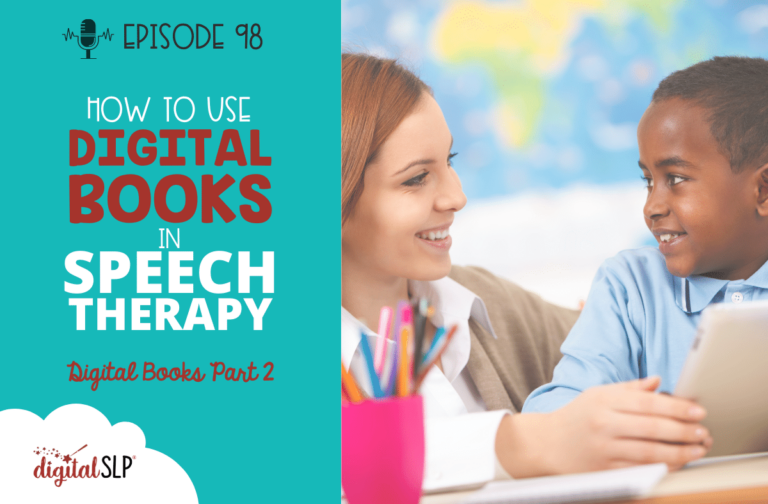



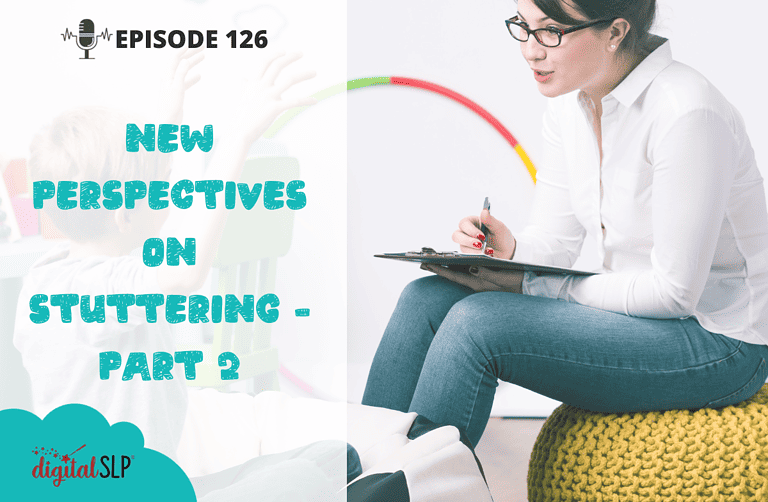
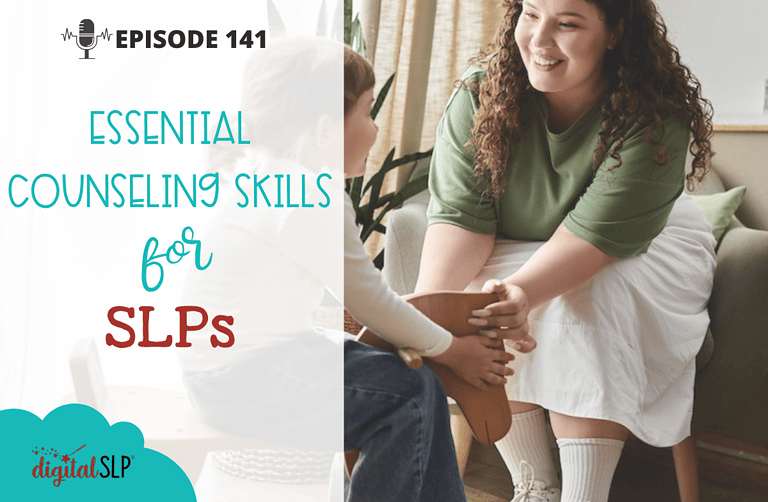

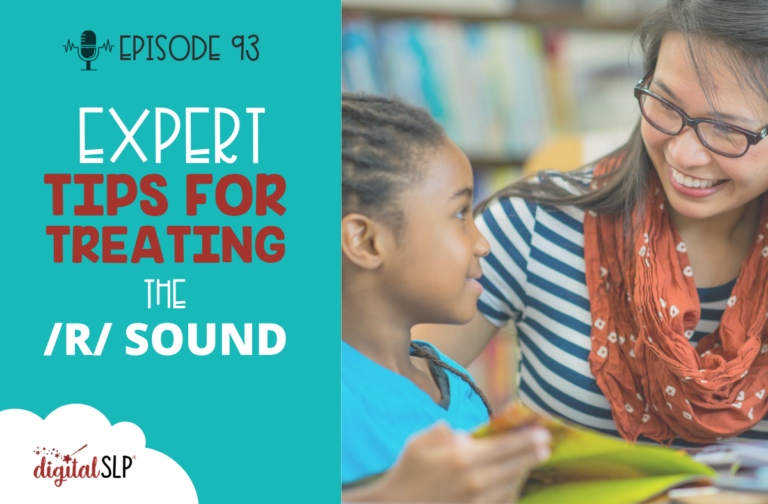
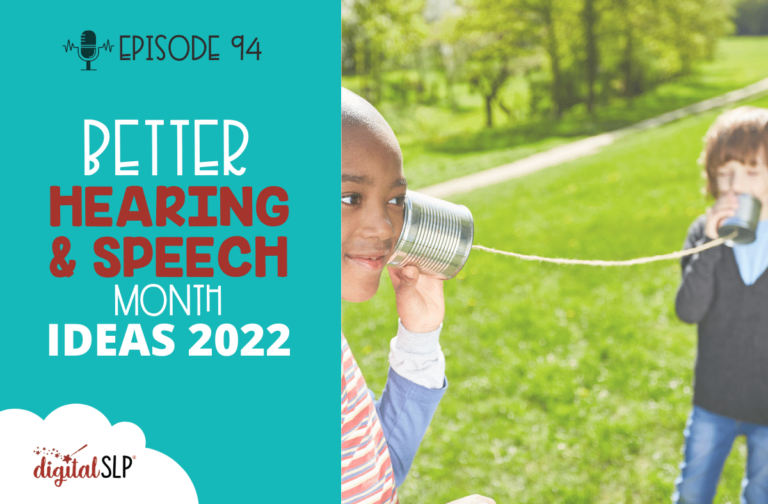
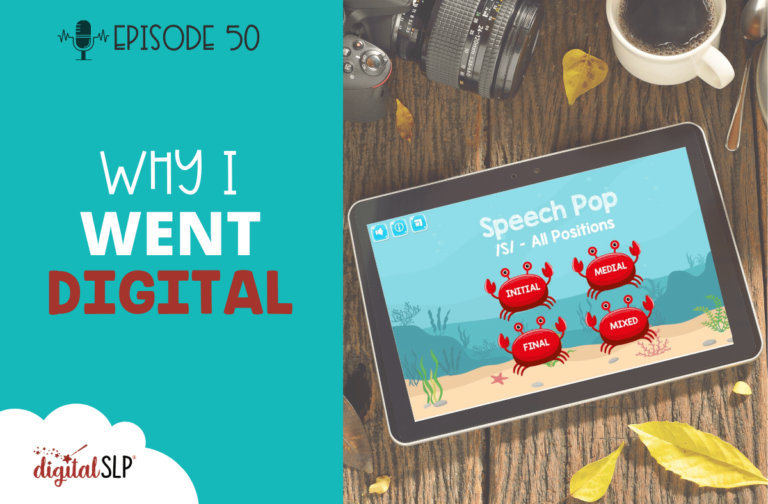

Recent Comments